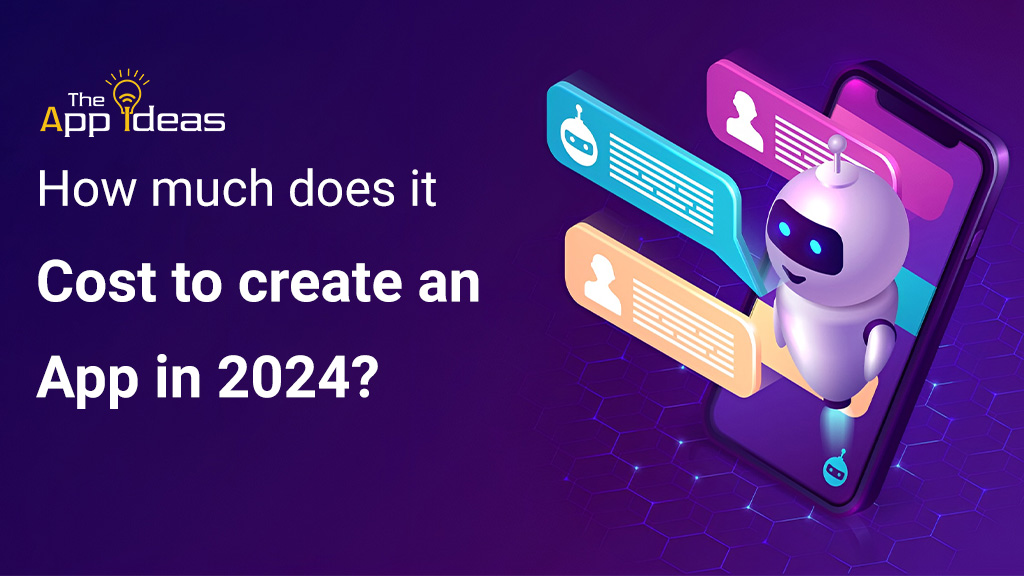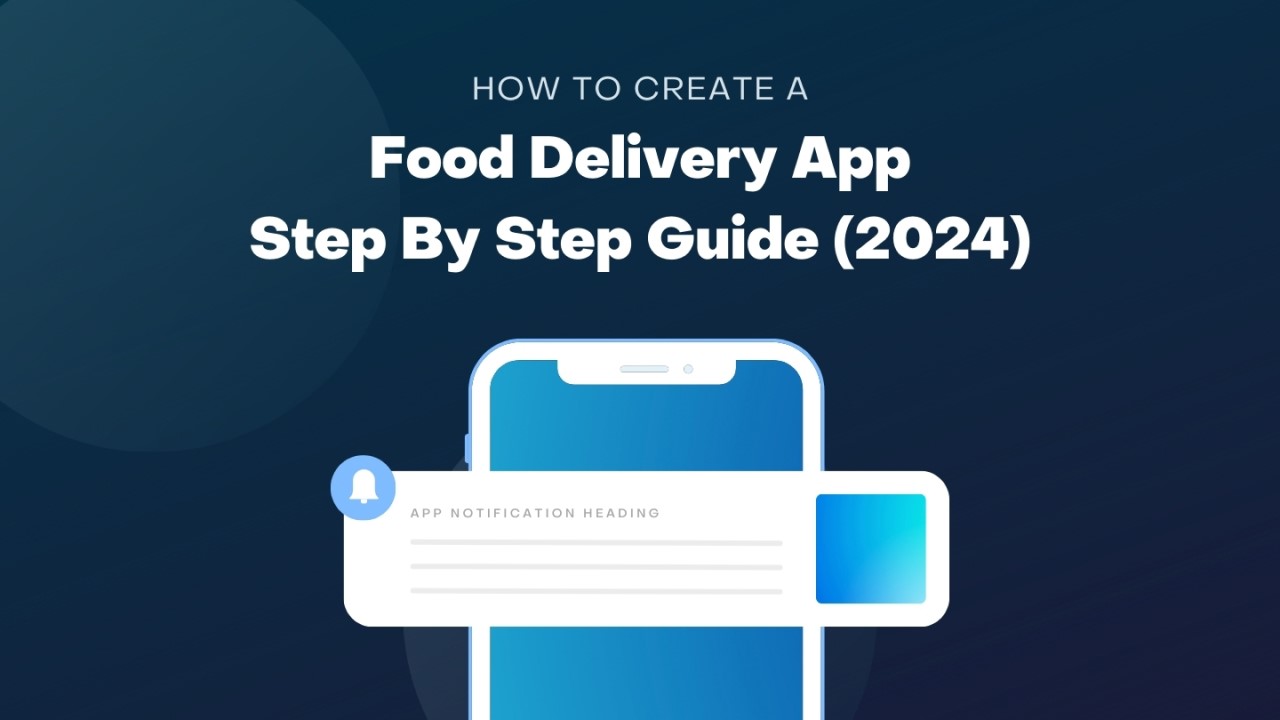How much money is needed to create an app? This is one of the most fundamental questions that must be answered before app brands and developers can move forward with a new app development project. While it is the most elementary part of a budget, an estimate of how much money will be needed to create the app is crucial to the success of any mobile app development project.

How Much Does It Cost to Create an App?
Think about your most recent purchases for your home or business. Whether you’re in the market for a new car, a new cell phone, or a new cleaning service, you’ll find that prices can range widely depending on a variety of factors.
Also valid for your mobile app. What does the average cost of create an app project look like to put that in perspective? The app’s cost will be based on the outcomes you expect to achieve with it.
You get what you pay for in the vast majority of situations. One cannot expect to create a fantastic app for a small sum of money. There’s no way around it. However, contrary to widespread belief, investing a large sum of money does not inevitably lead to a prosperous outcome.
Once you’ve made up your mind about the type of application you’re going to create an app, stick to it. If that happens, the price tag will rocket upwards.
Your initial investment of $10,000 could balloon into something that costs an additional $50,000 if you start adding app features like push notifications, geolocation, or app design elements that change the category of your app.
Don’t waste your time trying to combine features from a gaming app with those of a tax prep tool in a single social media app. These features are too complex for a single app to handle. Building it will be an arduous task, and it will be prohibitively expensive. Furthermore, it will lead to misunderstandings among your target demographic.
Employment Expenses for a Software Engineer
Whenever a company is considering hiring a mobile app developer (or multiple developers), the question of cost arises. There has been an increase in the average salary of a mobile app developer in the United States from the predicted $105,000 in 20221 to the current $120,000, as reported by Indeed.com. Australia and Germany rank second and third, respectively, when their currencies are converted to US dollars, with $94,000 and $65,000. To hire an expert in application development in a country like India, where the annual salary for such a position is only $4,100, is much more cost-effective than in the United States, Western Europe, or Australia.
However, a company shouldn’t base its decision to hire an app development team solely on the cost of those services. Instead, you should think about things like the opinions of past customers, the depth of a team’s technical knowledge, how well they stick to deadlines, and so on.
One of the first things to consider when estimating how much it will cost to create an app is where to find a team of app developers to hire who can work within the constraints of the app project budget while still producing a product that lives up to the necessary quality standards. Following are two charts detailing the highest-paying U.S. cities for iOS and Android app developers. Those on the West Coast are, unsurprisingly, the most prosperous.
Examples of App Development Cost
Some people falsely believe that a mobile app’s price tag directly correlates to the number of hours a single developer spends writing code. This tactic has no basis in reality at all.
In addition to code, the following experts must be involved in a mobile app development project:
- Tasks for the project backlog are developed by business analysts and project managers.
- The solution architect is the person who plans the infrastructure of the project’s backend.
- Quality assurance managers create functionality checklists to ensure that the project’s functionality runs smoothly and without flaws.
- Designers participate in all stages of the process, from the initial concept to the layout and prototype and finally to the finished product.
All of the aforementioned jobs require hiring experts who know their worth and can demand a reasonable wage. On top of that, it’s possible that you’ll need more than one developer to finish your project. Thus, the total price tag for your mobile app will be based primarily on the hours necessary to complete the project.
An example of this would be the development of a logistics mobile app with several integrations, such as a warehouse database, an online payment gateway, and booking capabilities. Consider for a moment that the development team at your company has only two months to complete the features of a project that is already up and running.
How about we break it down and look at each one individually?
- When we talk about “time constraints,” we’re referring to the amount of time we have to complete a given task.
- Specifically, the “cost constraint” is the project’s total budgeted spending limit.
- A project’s “scope constraint” is a list of must-haves that must be fulfilled for the project to be considered a success.
There is often tension between the following three limitations:
- Adding more to the project’s original scope usually means spending more time and money on it.
- Constrained resources and time may lead to higher costs and less overall success.
- There may be a need to devote more time and reduce the scope if resources are restricted.
- Managing projects effectively often involves taking into account the interrelated factors of time, money, and people.
A faster completion time can be achieved by assigning more people to the task at hand; however, this will increase the project’s overall cost unless we are able to cut costs elsewhere in the project by the same amount.
You can speed up the app’s development by either increasing the budget or reducing the project’s scope. The development team will need similar increases to the project’s budget and schedule if the project’s scope is expanded.
If you want an exact figure for how much your mobile project will cost, you’ll need to do the following:
- It is recommended that you begin by requesting a quote from a mobile app development company.
- Get in touch with the mobile app development team and explain the app’s concept, features, and business objectives.
- Next, count up all the mobile OSes.
Select the mobile OS that best meets your requirements. Remember that if you want to support both iOS and Android, you’ll have to double your development budget. As a result, you should create an MVP for a single platform.
In Step 3, you’ll use the app’s features to compile the list.
Make a list of the capabilities of your mobile app that, if met, would be enough to demonstrate the viability of your business concept.
The next thing to do is prioritize the features of the mobile app that will be included in the minimum viable product.
Forward the list to the team in charge of development so that a business analyst can prioritize features for the initial project scope, add missing features, and assess the need for any additional features.
Fifth, find out from the team developing your mobile app how much its main features will likely set you back.
An accurate cost estimate for mobile app development can be obtained if you have the app’s developers evaluate a list of must-have features and decide which ones to implement first.
Factors that Affect Application Costs
Many business owners who are currently having an app developed have voiced their dissatisfaction with the process. Understanding it is not difficult. It’s not easy to make an app from scratch for the first time. In order to be an efficient implementer, one must first craft robust strategies, and this is especially true when it comes to creating long-lasting software. Some sixteen percent of startups perish in their infancy due to cash flow problems. This is what you need to remember, and before you get started, you should do some work on estimating the costs.
There are primarily four factors that go into the final price of an app’s development, and they are as follows.
Plan of Attack
The development of an app cannot be separated from the design phase. Apps incorporate both the user interface and the user experience. Having clear objectives, in-depth knowledge of the market, and a focus on the end user’s satisfaction are all crucial to the success of any app.
Both the time and resources required to create an app increase linearly with the number of features and integrations it has. However, if you use templates that have already been created, you can reduce costs significantly.
Layout simplicity
When we talk about simplicity in design, we’re talking about something with no more than three or four screens and no capacity for storing any kind of information at all. Since there are only a few frameworks and integrations, you can rest assured that only the bare minimum of what’s needed will be delivered.

Aspects of the User Interface
The first step you take towards making your app a success is the most crucial to its ultimate success. Your mobile app’s UX, or user experience, is how it’s designed to be used by its target audience. Color psychology, the user’s natural eye path and the strategic placement of buttons are all potential components.
Your goal must be to create an app that is as easy to use as possible for the end user, right? Consequently, knowing your market, audience, goals, and other related topics is essential for developing such an experience. The costs of making an app, and the costs of making one that users will find engaging, are both open to interpretation.
Input/Output Interface
Similarly to how the design of your app’s user interface will affect the cost of developing it, the user experience will be impacted as well. An application’s “user interface” describes its appearance to end users. It calls for the use of many different kinds of visual material. You can go as far as you like with the degree of personalization, but the following features will always be there:
The Design’s Primary Colors Shaped screen elements designed with typography
Your goals should play a significant role in determining which features to include. Which specific goals are you hoping to accomplish with the help of your business app? Sales, customer interest, and knowledge are all possible KPIs. Inevitably, the greater the complexity of your app’s design, the higher the final cost to create an app.
Handmade with Care
Increased personalization is a natural byproduct of more fine-grained control over features and capabilities. Numerous libraries, such as React.js, Vue.js, and Angular, facilitate the introduction of brand-new features and animations. If you plan on using any third-party integrations, frameworks, or libraries in your app, you should budget for an increase in development costs.
This Complexity of the Features
There are many factors that go into determining how much it will cost to create an app, such as the features it will have, the roles it will fulfill, and the complexity of those features.
Native apps and cross-platform apps
Whether you choose to develop for a single platform or several, you cannot afford to make mistakes. When compared to native apps, which are developed specifically for one platform like Android, iOS, or the web. The costs associated with developing and maintaining cross-platform apps are much lower. That is the main distinction between cross-platform apps and native apps.
The complexity of data-storage systems
Adding a database to an application increases the development cost proportionally. With the introduction of new functions like in-app purchases, social media integration, location tracking, tighter security, and geolocation, it becomes necessary to expand the amount of data storage available.
A similar emphasis should be placed on familiarity with the target market. The precision of the price estimate benefits from this as well. A larger user base means a greater volume of records to keep.
Instances of a given function (complexity with roots) To make sure the business logic helps a wide range of users, a custom design may require the designer to define user roles. Typically, this involves determining “who can see what” in the program. It helps form a group with multiple uses.
Both the types of integrations and the total number of integrations are
The developers will start working on the integration method once you’ve decided on the features. Compared to the cheaper option of importing codes, the cost of writing codes from scratch is much higher.
Let’s say you want to offer in-app purchases to your app’s users, but you need payment integration to do so. There are several approaches you can take to integrate these systems successfully. Instead of reinventing the wheel, use services like PayPal and Stripe that have already been developed. Another option is to create an app for your own.
Recurring monetary exchanges
Recurring payments, like those used in e-commerce apps, necessitate a more robust security system and set of features. They need more room for the data to live, too. Information storage is also essential because each product needs its own page.

App hosting
An application needs to be hosted on a server or in the cloud so that it can be accessed over the internet.
Servers
In terms of market share, Amazon Web Services (AWS) is by far the most well-known and widely-used hosting platform available today. It offers low-cost hosting options for those creating mobile and web applications. Some AWS offerings are available for no cost during trial periods. It’s still up to you to decide what’s best for you, though.
Hidden App Development Costs
The moment a new approach to create an app gains traction, there will always be someone willing to take advantage of it. Many businesses jump into mobile app development without a thorough understanding of what it takes or what it really costs.
Just what causes my app’s price to go up?
The price of your mobile app will be set by how long it takes to program. Second only to “What do I need to get started?” in terms of frequency, the question “How long will it take to build my app?” is asked by prospective app developers.
The foundation is here.
The final price of your app could be significantly affected by the platform decisions you make. Due to differences in the languages used by native apps on iOS and Android, you will need to create two versions of your app.
HTML5-based hybrid app development is an alternative to traditional app creation. Using hybrid apps can help you save money on your project, and we’ll go over how to do that in the next section.
Substantial Completion of Multiple Difficulties
Apps that make heavy use of platform-specific features will cost more. Your product’s price will go up if you integrate features like Bluetooth, push notifications, and GPS into it.
Your app may require an API in order to function properly (Application programming interface). Using an application programming interface (API), external data can be displayed. Your API might be able to store information in a database for later use. Your app’s price tag could increase because of the inclusion of an API, but this will depend on the specifics.
A Content Management System, or CMS, could be what you need to keep track of everything that goes on in your app. Thanks to this, you won’t even have to resubmit an updated version of the app to the app stores if you want to change the language used within it.

Design
Your app’s design may have major implications for its cost. If the design is too intricate and requires the use of non-standard components, then the cost will increase.
Unique graphics and animations are frequently found in apps and require the expertise of a graphic designer or animator to create an app.
- Simpler app designs cost less to maintain.
- This is the team that built your app.
- One factor in establishing your app’s final cost is the skill and experience of the developers working on it.
- A recent college grad with little to no experience will be able to charge less than a well-established, internationally recognized agency that has won numerous awards.
- Inexperienced programmers are more likely to misinterpret your requirements, wasting your time and money. If you want to make sure your requirements are met, you need to find a happy medium between the price and the quality of service provided.
Knowing the 8 hidden costs of app development and taking measures to avoid them is essential if this is your company’s first time developing mobile apps.
The expense of creating apps for multiple platforms
App developers face a number of obstacles when making their first app. This could be due to inexperience or unfamiliarity with relevant details. It’s a common rookie mistake for mobile app developers to try to build their apps for multiple operating systems. A program written for Android cannot run on an iPhone because the two platforms require different programming languages.
Costs associated with setup and upkeep
Creating a mobile app from the ground up is a labor-intensive process. One might reasonably assume that once an application has been developed, the developers’ work is finished. While the development process may be over, there is still a great deal of work to be done. Maintaining the application after it has been developed and deployed is essential.
Promotion and Marketing
The app’s overall success depends heavily on its exposure through various forms of marketing and advertising. However, app publishers frequently make the mistake of allocating a larger portion of their budget to marketing and advertising. Creating a useful app and releasing it to multiple app stores increases the likelihood that people will install it.
Investing more in the first release
The debut of a mobile app is, without a doubt, an enormous step forward. Once the app goes live, you’ll have to keep shelling out money for upkeep. If you want your mobile app to be successful, you must update it frequently with new features. The environment in which your app operates is always changing, so even if you have no plans to add new features, you will need to make adjustments.
A shoddy app layout
Mobile app development firms typically delegate the app’s design to a dedicated in-house team. In order to get what they want, they will even hire outside professionals like freelancers.
Methods for identifying issues and fixing them
Most people in the mobile app development industry see testing as little more than a necessary evil. The developers think they’re finished and are more concerned with the app’s aesthetics. But it is essential to run the application through multiple rounds of testing to ensure that it is error-free. You have the mistaken belief that the first time you run your program, it will work perfectly.
What to Pay Attention to When Choosing an App Development Company?
Over the past few years, mobile applications have made deep inroads into practically every facet of our lives. Mobile apps improve upon current services and lay the groundwork for new innovations in the sector. These apps can facilitate access to immediate health care, physical training, and academic resources.
You should team up with a mobile app development firm that has experience in the industry.
The first step is to start looking for companies that make mobile app development their primary area of expertise rather than just a side project. By taking this course of action, you improve your chances of partnering with a seasoned technology company that specializes in developing apps for mobile platforms.
Find Out If the App Developer Has Previous Experience in the Field
Keep in mind that just meeting the needs of the market with a solution is not enough to ensure lasting success. As a business, you need to make sure that your product is compatible with standard business practices and addresses the problems that are specific to your industry.
Check the References and Reviews.
When looking for a place to stay, you probably check reviews on sites like Booking.com and TripAdvisor. Decision-making is greatly aided by feedback and ratings, and the same is true in software engineering.
Selecting a development partner capable of managing the full app life cycle should be a top priority.
There’s more to making a mobile app than just drawing up the blueprints and writing the code. There is a lot of legwork involved in bringing a product to market, including research, iteration, and testing.
You should get to know your team well before signing any contracts.
You can learn a lot about a vendor’s capabilities and track record by checking out the projects they’ve completed in the past, so don’t skip this step. Be mindful, however, that it is the company’s employees, not the company itself, who will be putting in the effort to complete your project.
The high price tag of app creation begs the question: why?
The high price tag of mobile app development can be traced back almost entirely to the expense of hiring qualified developers. High salaries are possible for workers with specialized design and programming skills all over the world.
An application is a type of software that is typically created over the course of a long period of time by a dedicated group of programmers. Specialists in the fields of planning, design, programming, testing, bug fixing, and deployment are needed for the process to succeed. A piece of software, including an application, requires time to be planned, designed, built, and tested. Developing an app costs more money as its duration grows.
Can an app be made without any financial outlay?
Though it’s not exactly easy, you can make a mobile app without spending any money. You could, for instance, construct it yourself using a platform that necessitates no coding, or you could find a technical co-founder, or you could seek out investors for financial backing. Alternate options could also be considered.
The cost of employing a developer to create an app will change depending on the type of engagement you opt for. Typically, clients of app development firms have the option of selecting one of three pricing models: a fixed price, a time and materials engagement, or a flat-fee agile engagement.
Finding the Best Mobile App Development Company
Despite the abundance of mobile app development firms, not all of them should be trusted. It is in your best interest to do thorough research before hiring anyone to work on your project, and the best way to do this is to ask lots of questions.
You need to be sure you’re working with the right team and that they can deliver quality app development at a reasonable price before you give them access to your vision.
Your portfolio, level of expertise, team size, and client feedback are all crucial factors to consider. However, there are other considerations to make to ensure you are kept up to date on your project, such as post-development support, app maintenance, and regular project updates.
The Price Structure
A mobile app’s price tag can be broken down even further based on the size or complexity of your app idea.
This may sound like a blanket statement, but keep reading to learn why that’s not the case. Consider the following:
- The cost of developing a simple proof-of-concept app can range from $25,000 to $50,000.
- The cost to develop a basic mobile app is $50,000 to $125,000.
- One can expect to pay between $125,000 and $200,000 to develop a moderately sized app.
- Apps with more features and greater size will cost at least $200,000.
In order to develop and support their mobile applications, many large companies invest millions of dollars annually in staffing large mobile development teams.
In general, how much does it cost to make an app?
There is a median cost of $102,000 associated with the minimum viable product phase of an app development project.
- On average, $30 000 is spent on developing a proof-of-concept mobile app.
- The average cost to develop an app prototype is $12,000.
- This data is based on thirty fairly typical projects completed in the years 2021 and 2023.
If you want to make a mobile app, how much money do you need?
The price of app development includes more than just the time and effort put into planning and coding. Server costs, Apple and Google developer account fees, ongoing maintenance fees, marketing costs, and services provided by third parties should all be factored in as well.
Initial costs for a mobile app business could include:
Costs associated with server hosting
Depending on the number of users, the amount of data being sent and received, and the services being run on the server. The monthly cost of a server could range from $10 to $10,000.
Providers like Amazon Web Services (AWS) offer free hosting tiers for new customers. To begin with, a freemium model may be adequate for some apps, especially in their early stages of development. A free tier won’t be sustainable for businesses with a heavier server load or a faster rate of user acquisition.
Programmer Compensation and Benefits
You’ll need to sign up for a developer account with either Apple or Google in order to distribute your app through their respective app stores. In comparison to Apple’s Developer Program, which costs a yearly subscription fee of one hundred dollars, Google’s Android Developer Program only requires a one-time payment of twenty dollars.
Repairs and Maintenance that Occur Regularly
To keep your app updated and running smoothly, you should set aside at least $2,200 yearly for maintenance. If either Apple or Google released a significant update to their operating system, if there were major changes to third-party services or frameworks, or if deprecated features became available, the cost could rise significantly.
Your app will incur additional costs beyond the normal upkeep if you decide to make changes in response to user feedback and analytics. The scope of the project and the associated costs will be set by the changes you wish to implement. After the product has been released, it is recommended that at least 10% of the total budget be set aside for future updates and improvements.
Advertising
You can allocate any budget you like towards promoting your app. Your marketing approach will fluctuate in accordance with your industry, your target audience, and your budget.
Some successful mobile applications spent almost no money on promotion, while others spent millions. The single most important thing to remember is that app distribution requires marketing. If you want your app to be a success, you need to invest in marketing in some way, whether that’s through paid ads or social influencers.
Features of the App Development in this kind of quote:
- Augmented Reality (AR) and Virtual Reality (VR)
- Advance Security with Progressive Features
- Cloud-native mobile applications.
- Innovative analytics, AI, and machine learning capabilities.
- Beacon Technology for improved User Engagement
- Boost Efficiency with Mobile Apps That Don’t Require Installation
- Expand Mobile Payments with Functionality
- Security is a priority.
- Better Engagement with Super apps
- Cloud Computing to Enhance Scalability
- Larger Ecosystem along with the IoT (Internet of Things)
- Mobile App Developers from top Scale.
Conclusion (here only you will mention the actual cost)
The average cost to create an app in 2024 will be between $45,000 and $240,000. There are many variables that will affect the final price, such as the complexity of the app. The number of features it will have, the supported platforms, the level of polish needed, and the location of the development team.

















